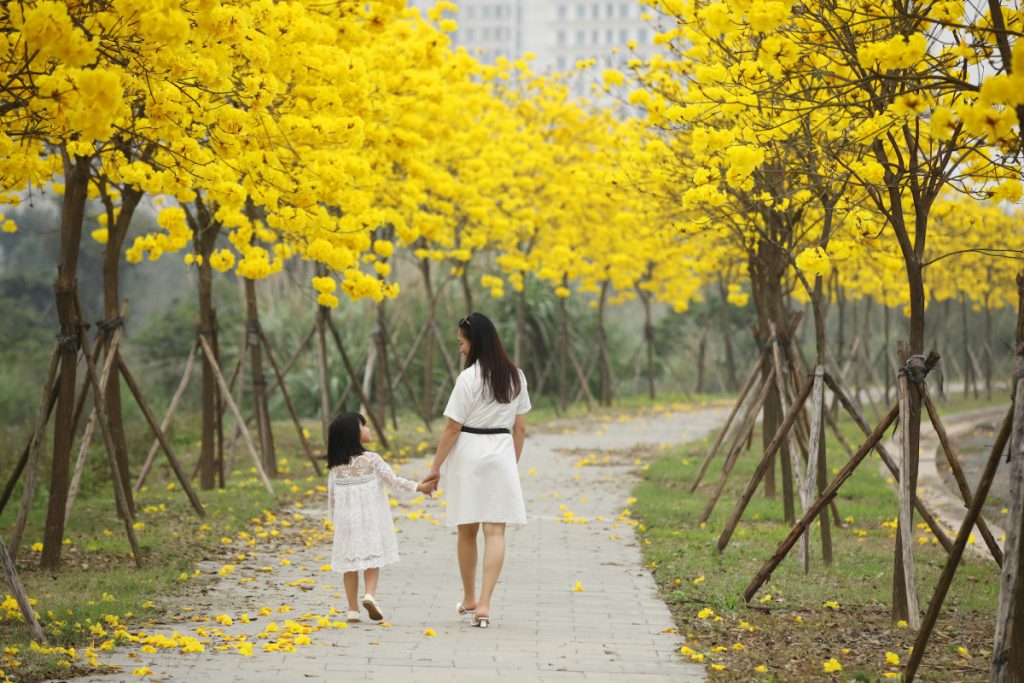Ha Dong District, located in the southwest of Hanoi, Vietnam, is a vibrant and rapidly developing area that showcases the perfect blend of tradition and modernity.
It is located 12 km southwest of the city center. Ha Dong District is home to the headquarters of several municipal administrative agencies in Hanoi. It has a rich cultural heritage and is currently one of the fastest-growing localities in Hanoi.
Steeped in rich cultural heritage and surrounded by natural beauty, Ha Dong District is an enticing destination for both locals and tourists alike. In this article, we will delve into the enchanting highlights and attractions that make Ha Dong a must-visit district in Hanoi in 2024.
Let’s explore the fascinating things in Ha Dong District together with TripWordwide.
More: About Son Tay town in Ha Noi 2024
Ha Dong District | About Ha Dong: Map, postal codes, Tourist, History Update 07/03/2025
History of Ha Dong District Update 07/03/2025
In 1888, Ha Dong Province was established, with its capital located in Cau Do Village, thus it was called Cau Do Province at that time.
In 1904, Cau Do Province changed its name to Ha Dong Province, with the town of Ha Dong as its capital.
In 1965, Ha Dong Province and Son Tay Province were merged to form Ha Tay Province, with Ha Dong town becoming the capital of Ha Tay Province.
On December 27, 1975, during the second session of the Fifth National Assembly, a resolution was passed to merge Ha Tay and Hoa Binh Provinces into Ha Son Binh Province. Ha Dong town became the capital of Ha Son Binh Province.
On December 29, 1978, during the fourth session of the Sixth National Assembly, a resolution was passed to approve the merger of several districts, towns, communes, and townships from Ha Son Binh Province and Vinh Phu into Hanoi.
Consequently, Ha Dong town became part of Hanoi but was temporarily administered by Ha Son Binh Province.
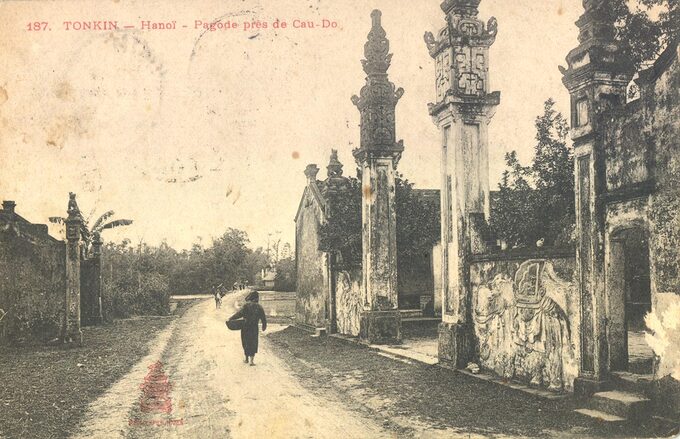
On August 12, 1991, during the ninth session of the Eighth National Assembly, a resolution was passed to separate Ha Son Binh Province into two provinces: Ha Tay and Hoa Binh.
As a result, Ha Dong town again belonged to Ha Tay Province, comprising five communes: Kien Hung, Van Khe, Van Yen, Van Phuc, Ha Cau, and three wards: Quang Trung, Yet Kieu, Nguyen Trai.
On September 23, 2003, the government issued Decree No. 107/2003/ND-CP, establishing Van Phuc Ward and Ha Cau Ward in Ha Dong town based on the area and population of Van Phuc and Ha Cau communes, respectively.
It also transferred Yen Nghia commune from Hoai Duc district and Phu Luong commune, Phu Lam commune from Thanh Oai district to be under the administration of Ha Dong town.
On April 1, 2006, the government issued Decree No. 1/2006/ND-CP to expand Ha Dong town. Accordingly, all of Bien Giang and Dong Mai communes from Thanh Oai district and Duong Noi commune from Hoai Duc district were transferred to Ha Dong town for administration.
After the adjustment, Ha Dong town had 15 administrative units, including seven wards: Quang Trung, Yet Kieu, Nguyen Trai, Van Mo, Phuc La, Van Phuc, Ha Cau, and eight communes: Kien Hung, Van Khe, Yen Nghia, Phu Luong, Phu Lam, Bien Giang, Dong Mai, Duong Noi.
On December 27, 2006, the government issued Decree No. 155/2006/ND-CP to establish Ha Dong City as part of Ha Tay Province.
Ha Dong City comprised 15 administrative units, including the wards: Quang Trung, Yet Kieu, Nguyen Trai, Van Mo, Phuc La, Van Phuc, Ha Cau, and eight communes: Kien Hung, Van Khe, Yen Nghia, Phu Luong, Phu Lam, Bien Giang, Dong Mai, Duong Noi.
According to the resolution of the twelfth session of the National Assembly on May 29, 2008, starting from August 1, 2008, together with the entire Ha Tay Province, Ha Dong City was merged into the capital city of Hanoi.
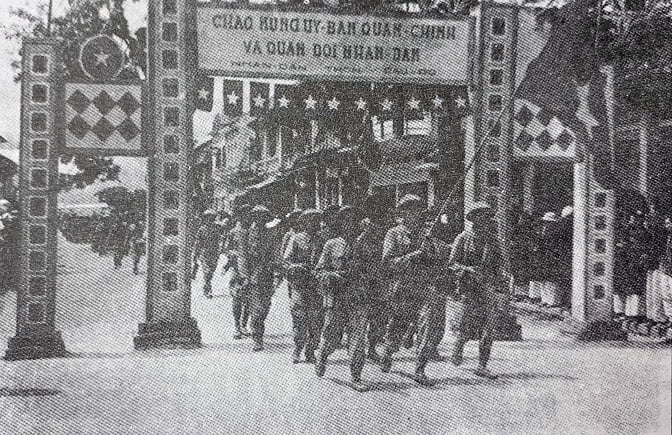
On May 8, 2009, the government issued Resolution No. 19/NQ-CP on the establishment of Ha Dong District under Hanoi, based on the entire natural area of 4,791.74 hectares, including 17 subordinate wards of Ha Dong District.
In recent years, the district has experienced significant development. The economy has seen considerable growth, with industries such as construction, trade, services, and tourism exhibiting high growth rates.
These sectors have become the driving force behind the district’s economy, accounting for an increasing proportion of its overall economic activity.
The district’s infrastructure is being developed with modern facilities, resulting in noticeable transformations in both urban and rural areas.
Geographical Location Update 07/03/2025
Ha Dong is known for its bustling markets, cultural landmarks, and a blend of traditional charm with modern amenities. In this article, we invite you on a virtual journey to explore the enchanting corners of Ha Dong District, using the map as your guide.
Ha Dong District is a captivating blend of tradition and modernity, as revealed through the map’s lens. From the silk craftsmanship at Van Phuc Silk Village to the bustling Ha Dong Market and the serene beauty of Ha Dong Park and Van Quan Lake, the district offers a diverse range of experiences for visitors and residents.
Ha Dong District is an inner district of Hanoi, originally the city of Ha Dong in Ha Tay Province. It is an area with a rich cultural heritage and now one of the fastest-growing economic and social regions in the city.
- It shares its eastern border with Thanh Tri District.
- To the northeast, it borders Thanh Xuan District.
- In the north, it borders Nam Tu Liem District and Hoai Duc District.
- To the west, it borders Quoc Oai District, with the Day River as the boundary.
- In the southwest, it borders Chuong My District, also with the Day River as the boundary.
- In the south, it borders Thanh Oai District.
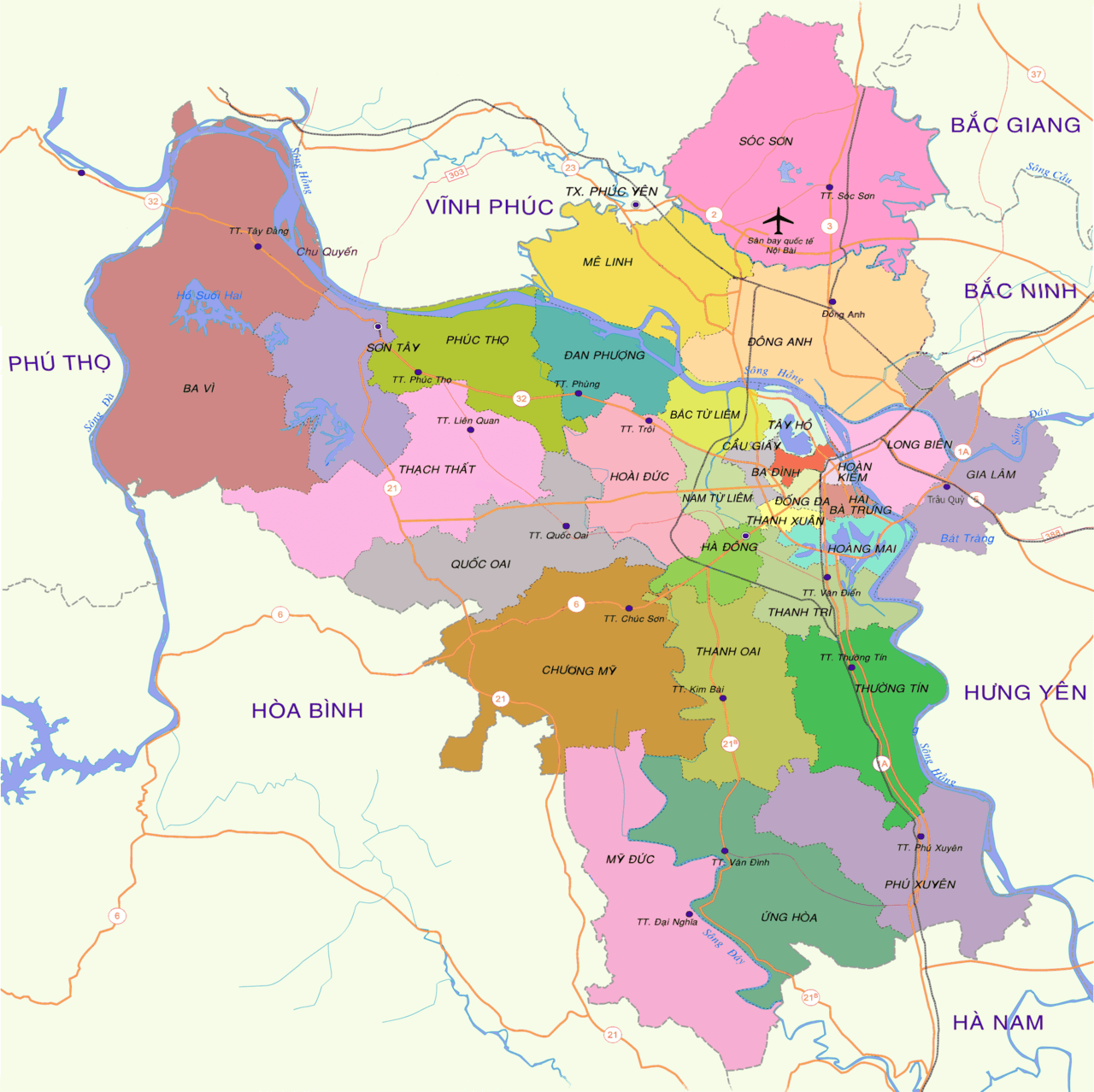
Administrative Divisions Update 07/03/2025
Ha Dong District currently has 17 administrative units, including the following wards: Quang Trung, Yet Kieu, Nguyen Trai, Phuc La, Van Phuc, Ha Cau, Van Quan, Mo Lao, La Khe, Phu La, Kien Hung, Yen Nghia, Phu Luong, Phu Lam, Duong Noi, Bien Giang, and Dong Mai.
The headquarters of the District People’s Committee is located at No. 4 Hoang Van Thu Street, Ha Dong, Hanoi.
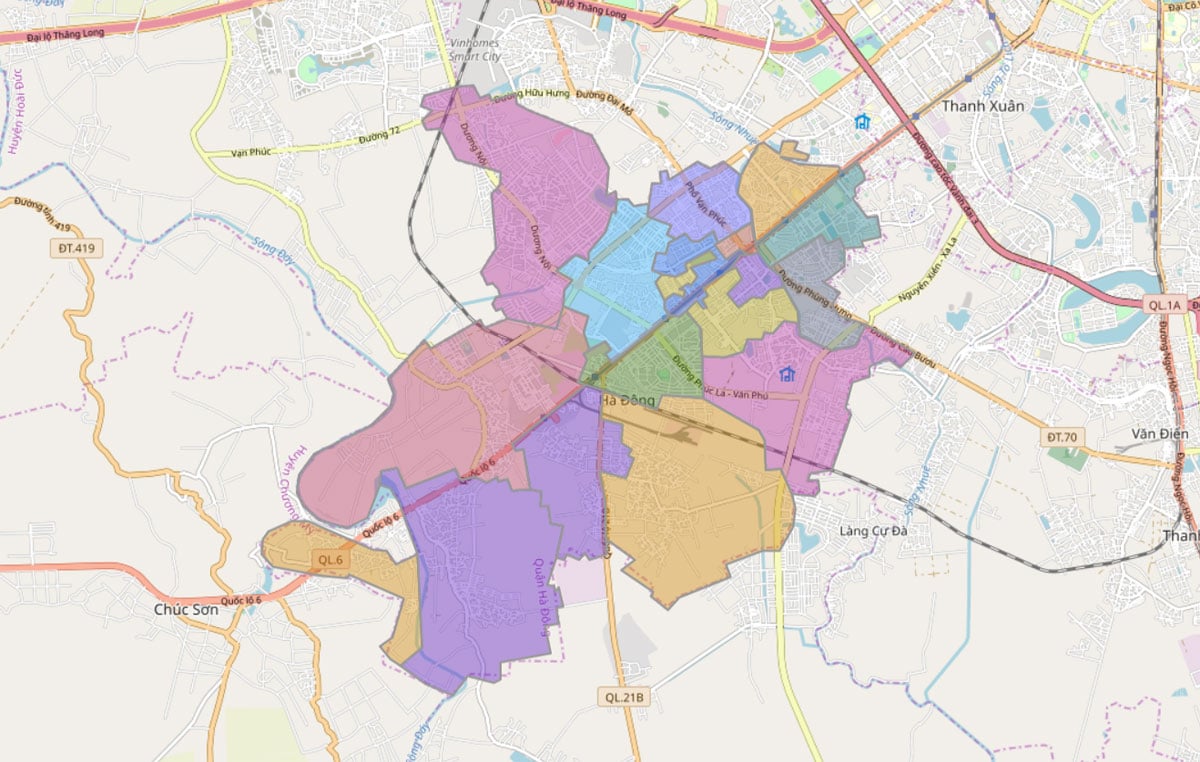
Ha Dong district Hanoi Vietnam postal code
District / County Zipcode
- Ha Dong District 12100
Wards Zipcode
- Bien Giang Ward 12117
- Duong Noi Ward 12114
- Dong Mai Ward 12118
- Ha Cau Ward 12106
- Kien Hung Ward 12121
- La Khe Ward 12113
- Mo Lao Ward 12110
- Nguyen Trai Ward 12107
- Phu La Ward 12122
- Phu Lam Ward 12119
- Phu Luong Ward 12120
- Phuc La Ward 12108
- Quang Trung Ward 12115
- Van Phuc Ward 12112
- Van Quan Ward 12109
- Yen Nghia Ward 12116
- Yet Kieu Ward 12111
Exploring Ha Dong District Update 07/03/2025
Ha Dong Culture
Ha Dong is an area with a long-standing tradition and culture. Within the district, there are several famous craft villages, including:
Van Phuc Silk Village
Van Phuc (now transformed into Van Phuc Ward) is located in the northern part of Ha Dong. Van Phuc Village was once an ancient Vietnamese village with a renowned silk weaving craft that dates back over 1000 years.
According to folklore, Lady La Nang De, also known as Thanh Thanh Thanh Hoang, played a significant role in establishing the village and teaching the local people the art of silk weaving.
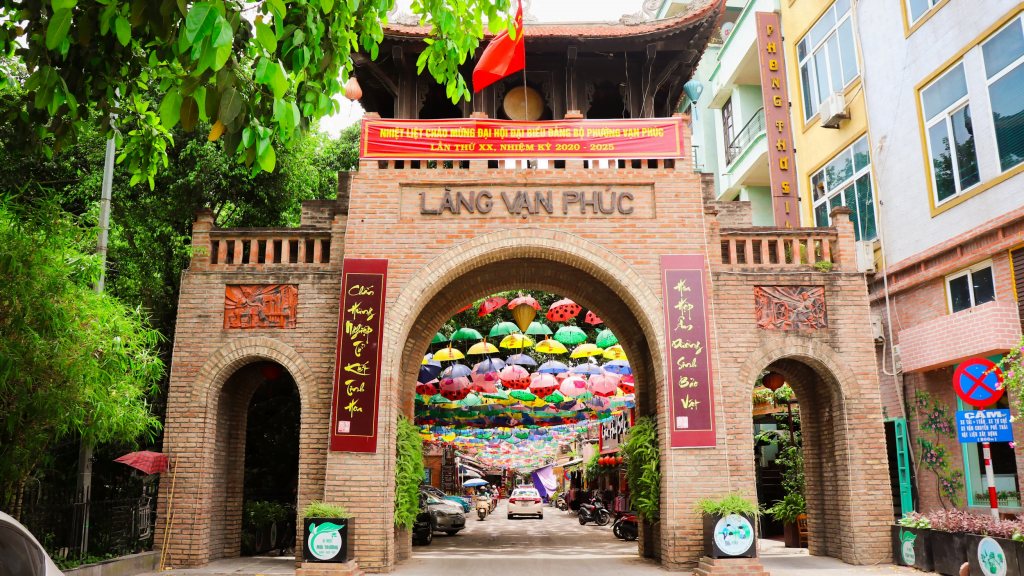
Van Phuc silk has become well-known and is mentioned in folk verses and sayings throughout the country: “The La Khê and Van Phuc silk, famous in Ha Dong,” “In Saigon, the sun feels cool because of the silk from Ha Dong.”
The reputation of Ha Dong silk has been immortalized in poetry, music, and film (as seen in the film “Hanoi’s Silk Dress”). During the resistance against French colonialism, Van Phuc became a safe zone for the Central Committee and the North Vietnam Party Committee.
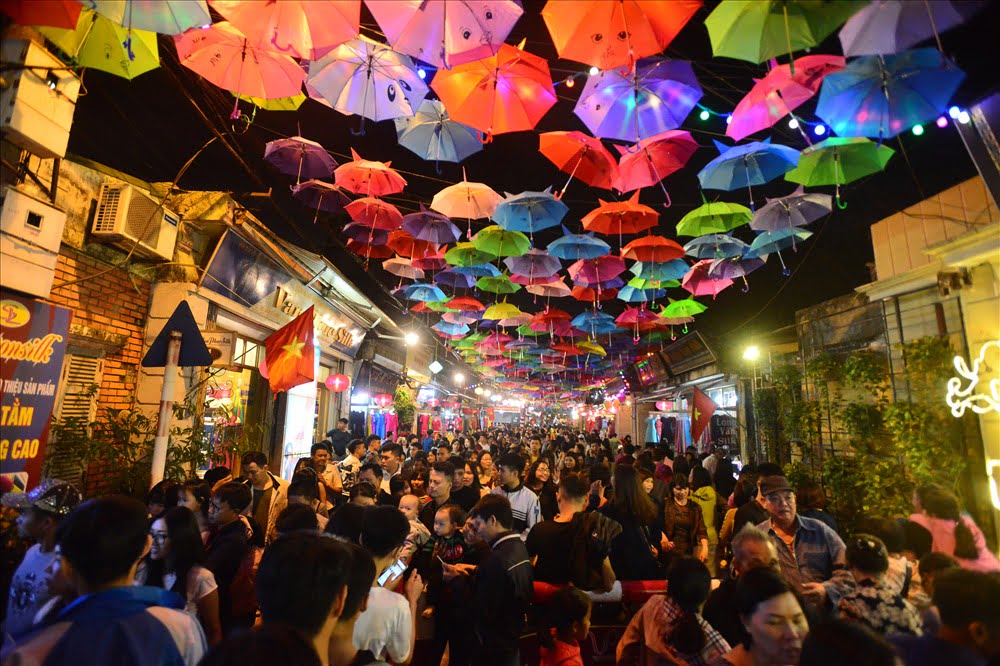
In December 1946, President Ho Chi Minh stayed and worked at the residence of Nguyen Van Duong. It was here that Ho Chi Minh presided over the Expanded Central Committee Conference of the Communist Party of Vietnam, making significant decisions to launch the nationwide resistance war against the French and setting the strategic direction for the war.
Da Sy Blacksmith Village
Da Sy Village is located south of the district center. It is an ancient village known for its famous blacksmithing craft and a tradition of scholarship.
During the feudal era, Da Sy Village produced many scholars who achieved high academic success. Throughout different dynasties, the village’s original name, Huyen Khe, was changed to Da Sy due to its many successful doctoral candidates.
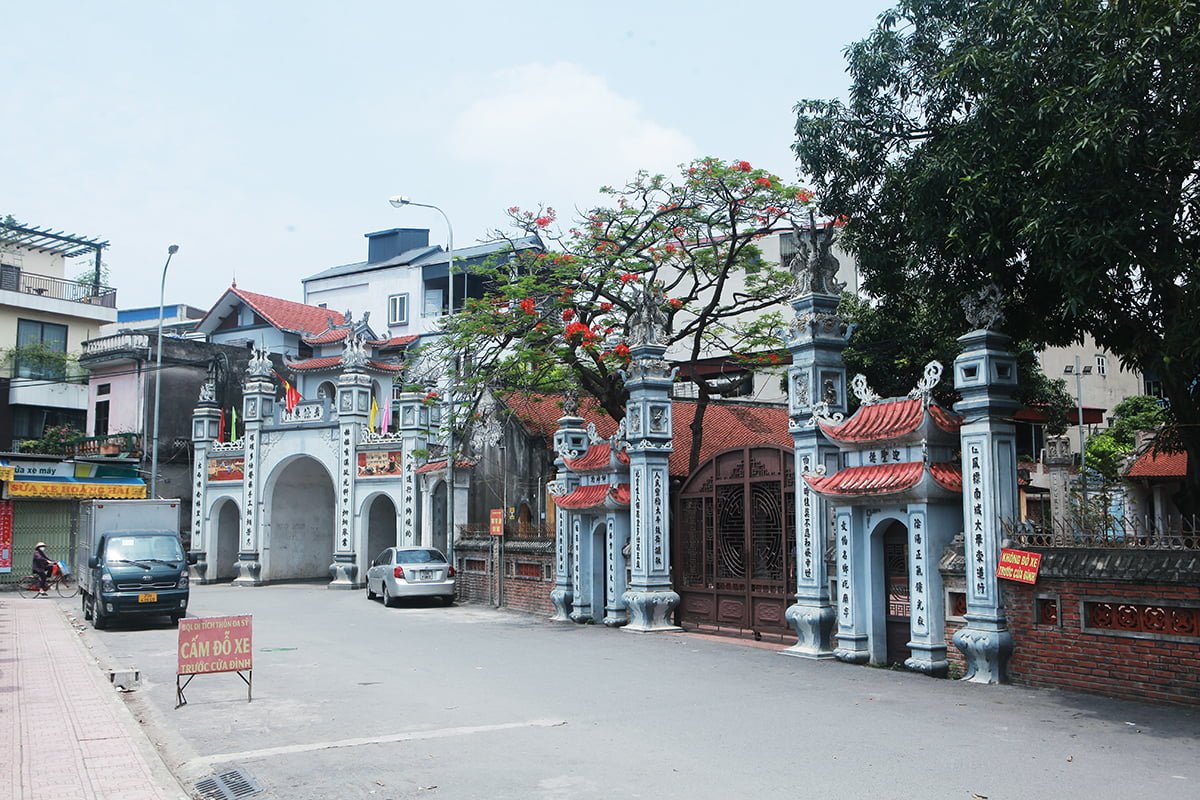
Da Sy produced 11 doctors, including two royal doctors and one dual-state doctor. Da Sy is also renowned for its diligent and creative work ethic. With their intelligence and talent, the people of Da Sy have created famous forged products for the livelihood of the local population.
Da Sy blacksmithing products, ranging from knives and scissors to agricultural tools, are present throughout the country. In 2001, Da Sy Blacksmith Village was recognized as a traditional craft village.
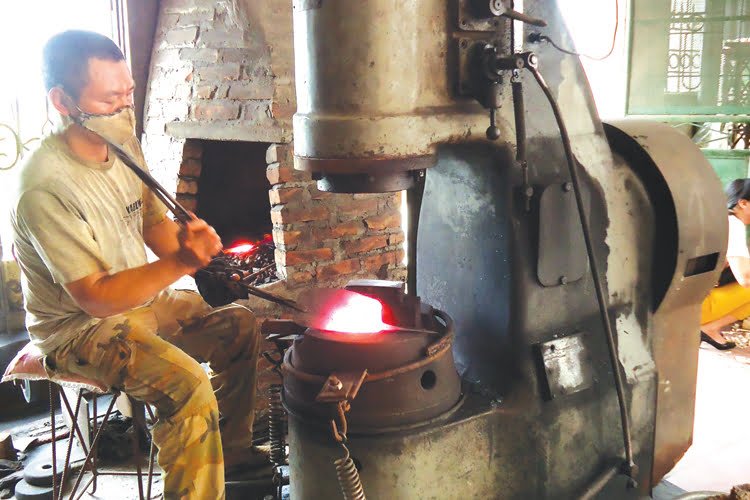
La Khe Weaving Village
La Khe Village is one of the seven La villages in the former La District. The village has been renowned for its silk production since ancient times.
The village was formed in the 5th century and was initially named La Ninh, with “La” referring to silk and “Ninh” meaning prosperity and longevity.
The village’s fertile land, formed by the silt from the Hong, Day, and Nhue rivers, is suitable for growing mulberry trees, raising silkworms, and nurturing silk production. In the 15th century, La Ninh changed its name to La Khe, which means “weaving village by the small river.”
However, the weaving products in the village were still primitive, mainly consisting of raw silk and silk threads used by the residents of the ancient capital, Thang Long.
In the early 17th century, Han people from the Luyang region in China came to Vietnam and brought their traditional hand-weaving techniques.
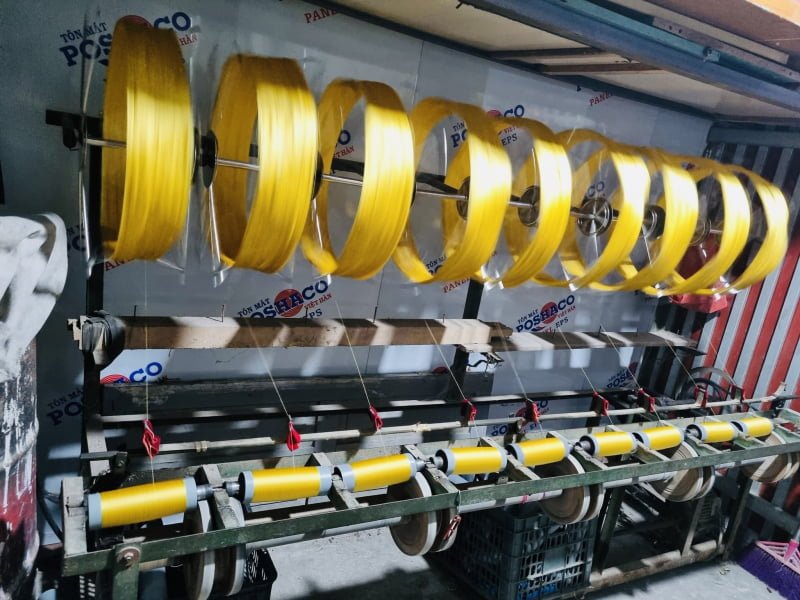
Among them, ten Chinese families settled in La Khe and passed down the art of silk weaving, dyeing, and advanced weaving techniques to the villagers.
During that time, most of the La Khe villagers lived by farming and weaving. La Khe’s silk products, including brocade, damask, satin, and other fabrics with intricate patterns and designs, were chosen to make clothing for the noble classes in the feudal society.
La Khe Village is known as an ancient Vietnamese village in the “Four Sacred Villages: Mo La Canh Cot.” The people of La Khe take pride in their scholarly traditions, with a saying that goes, “Men in the village hold high positions as mandarins and doctors, while women become princesses and queens.”
La Khe is a village of scholars, with many achieving high academic ranks. During the feudal period, nine residents of La Khe earned their doctorate degrees.
The village is also famous for its high-quality silk products favored by the royal court, with unique designs and patterns.
La Khe is also renowned for its cultural and religious sites, such as the Dinh-Chua-Bia Ba La Khe complex, dedicated to the worship of Lady Tran Thi Hien (1511-1538), the daughter of a local scholar and military commander, Tran Chan.
Lady Tran Thi Hien held the position of the second princess and was the wife of King Mac Dang Dung. She was both beautiful and virtuous, known for her compassion towards the poor, guidance in business endeavors, and promotion of the weaving industry.

Before her passing, she donated all her land and assets to the people. In 1538, Lady Tran Thi Hien peacefully rested in the Vang field, her homeland.
Legend has it that she possessed spiritual power and continued to help people even after her death, which is why, for over 550 years, the local people have revered and held solemn rituals at her worship site.
In 1982, the residents of La Khe brought a commemorative stele to the La Khe historical site for worship.
Mau Luong Pagoda
Mau Luong Pagoda, also known as Dai Bi Pagoda, is located in Kien Hung Ward. The pagoda covers an area of over 2,000 square meters and features traditional architectural elements such as Tam Quan (Three Entrance Gate), the main pagoda, shrines, a dining hall, guesthouses, and a back house, arranged in the shape of the Chinese character “Chi.”
The Buddha statues in the pagoda are made of clay coated with gold lacquer, with some dating back to the 17th century. The pagoda also preserves several precious and characteristic decorative patterns, such as the relief on the Canh Hung Stele, featuring the famous Dai Bi prayer.
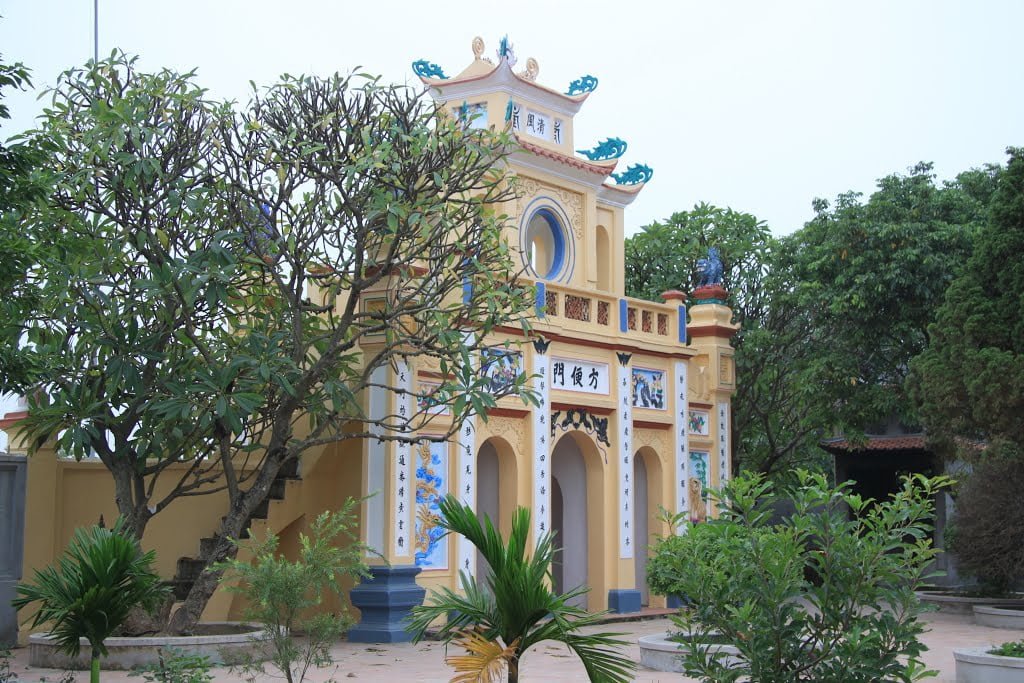
The front face of the stele is adorned with dragon carvings in the artistic style of the Mac Dynasty, surrounded by raised circular beads and clouds.
The back face of the stele depicts a phoenix worshipping the moon in a folk art style, with phoenix wings resembling bird wings rather than the typical style, symbolizing prosperity and simplicity.
Ba La Stele
Ba La Stele is famous for its folk belief address, dedicated to the veneration of the Holy Lady Ba. It commemorates Tran Thi Hien, the daughter of a local scholar and military commander, Tran Chan.
She held the position of the second princess and was the wife of King Mac Dang Doanh. Tran Thi Hien was both beautiful and virtuous, known for her compassion and guidance to the poor, as well as her promotion of weaving and other economic activities.
Before her passing, she generously donated her fields and assets to the people. In the Year of Canh Tuat (1538), she peacefully rested in the Vang field, her homeland.
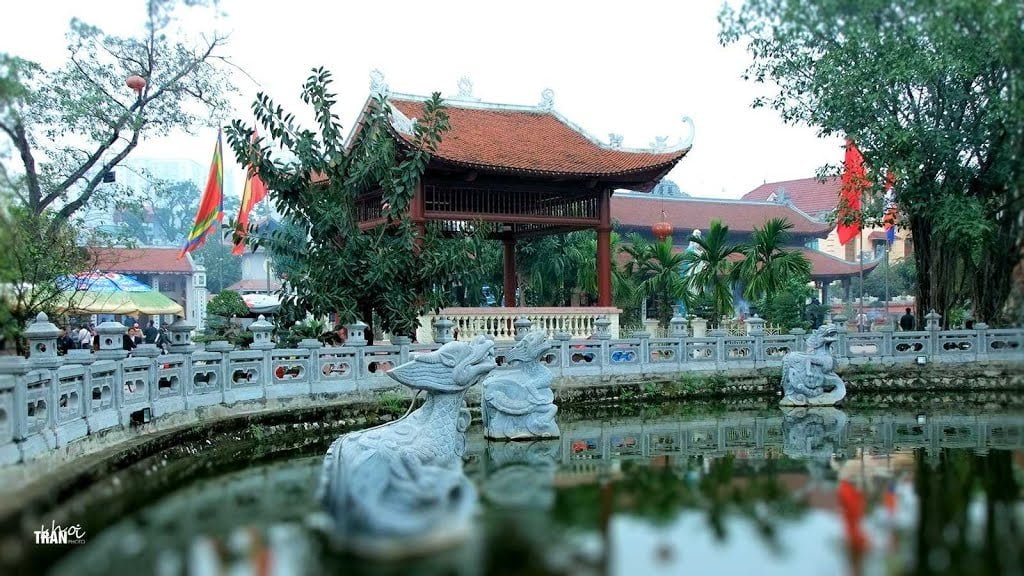
According to legend, Lady Tran Thi Hien possesses divine powers and continues to help people, which is why for over 550 years, people in the region have revered her and conducted solemn ceremonies at her worship site.
In 1982, the people of La Khe brought a commemorative stele to the La Khe historical site for worship.
Dien Khanh Pagoda
Dien Khanh Pagoda, also known as Dien Khanh Tu, is located in La Khe Ward, Ha Dong District. The pagoda was built during the Ly dynasty and is well-known in the region for its exceptional beauty.
It is situated on elevated land, presenting an impressive and bright appearance. Its sturdy structure mainly consists of Tam Quan (Three Entrance Gate), the main hall, shrines, a dining hall, and an upper sanctuary.
The pagoda faces south but slightly tilts westward. Within the pagoda, numerous valuable cultural relics have been preserved, including stone steles from the Ly dynasty, bronze bells dating back to the Canh Thinh 2nd reign, and various rare Buddha statues from the Tran and early Le dynasties to the beginning of the 20th century.
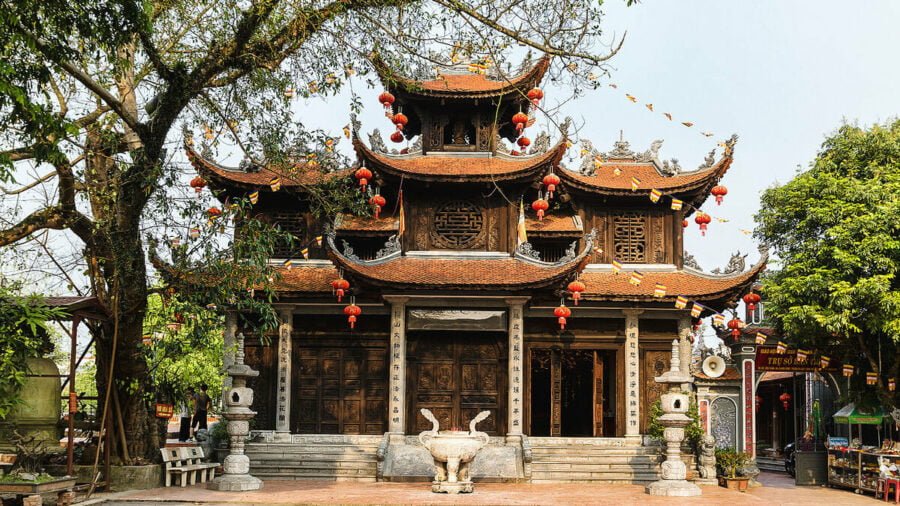
These include a stone statue of the Bonze Teacher Bodhisattva, which holds significant artistic value from the Ly dynasty, inheriting the Gandhara artistic style.
It is considered the second most valuable statue after the one in Ha Bac. The pagoda also houses numerous wooden Buddha statues ranging in age from the Mac dynasty to the early 20th century.
Dien Khanh Pagoda was recognized as an architectural and artistic heritage site by the Ministry of Culture and Information (now the Ministry of Culture, Sports, and Tourism) in 1989.
Places to Visit in Ha Dong Update 07/03/2025
TiniWorld Ho Guom Plaza
TiniWorld Ho Guom Plaza is one of the preferred play areas for children in Ha Dong. It is designed as an educational and recreational playground, creating a safe and lively international environment where children can come to play and learn.
TiniWorld Ho Guom Plaza is designed and organized into four villages based on cartoon characters, including NOM Village with interactive sports games, fishing ponds, and sand play areas; CAW Village with cosplay and fashion games, creative garage; RAM Village with intellectual computer games; and LOT Village with cooking classes, culinary areas, and green gardens.

World Games at Melinh Plaza Shopping Mall Update 07/03/2025
World Games is located on the fourth floor of Melinh Plaza Shopping Mall on To Hieu Street. This amusement park covers an area of about 1,300 square meters and features charming architecture. It is another option for visitors looking for a place to have fun in Ha Dong.
Here, you will find various exciting games divided into spacious play areas, including bumper car rides, a fairy garden for young children, and a slot game area with hundreds of attractive games for both adults and children.
Furthermore, if you are visiting with your family, you can enjoy delicious food at KFC, Pizza, BBQ restaurants or watch movies at Lotteria Cinema, and go shopping at Metro supermarket.

Delicious Foods to Try in Ha Dong District Update 07/03/2025
Ha Dong is also known for its culinary delights and a variety of representative restaurants. Here are some restaurants you can visit to enjoy the local cuisine when you have the opportunity to visit Ha Dong.
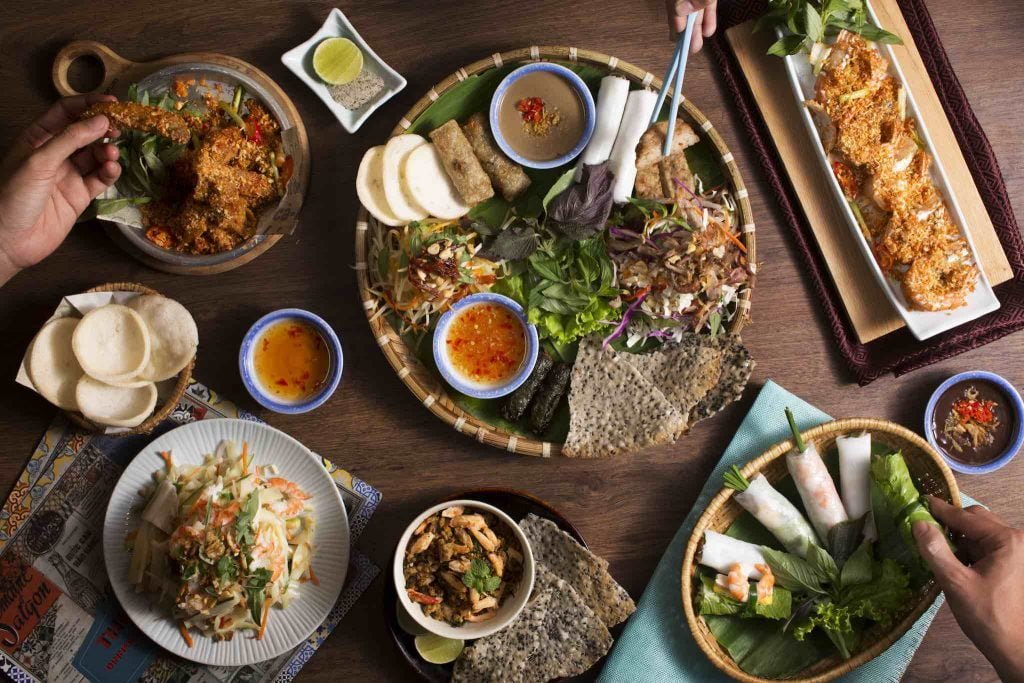
Bun dau Giang Beo: Located at 18A Alley 3 Ao Sen, Ha Dong District.
Grilled nem: Located at 52 Mo Lao, Ha Dong District.
Grilled skewered meat bread from Lang Son – Lasoba: Located at 8 Alley 1 Ao Sen, Ha Dong District.
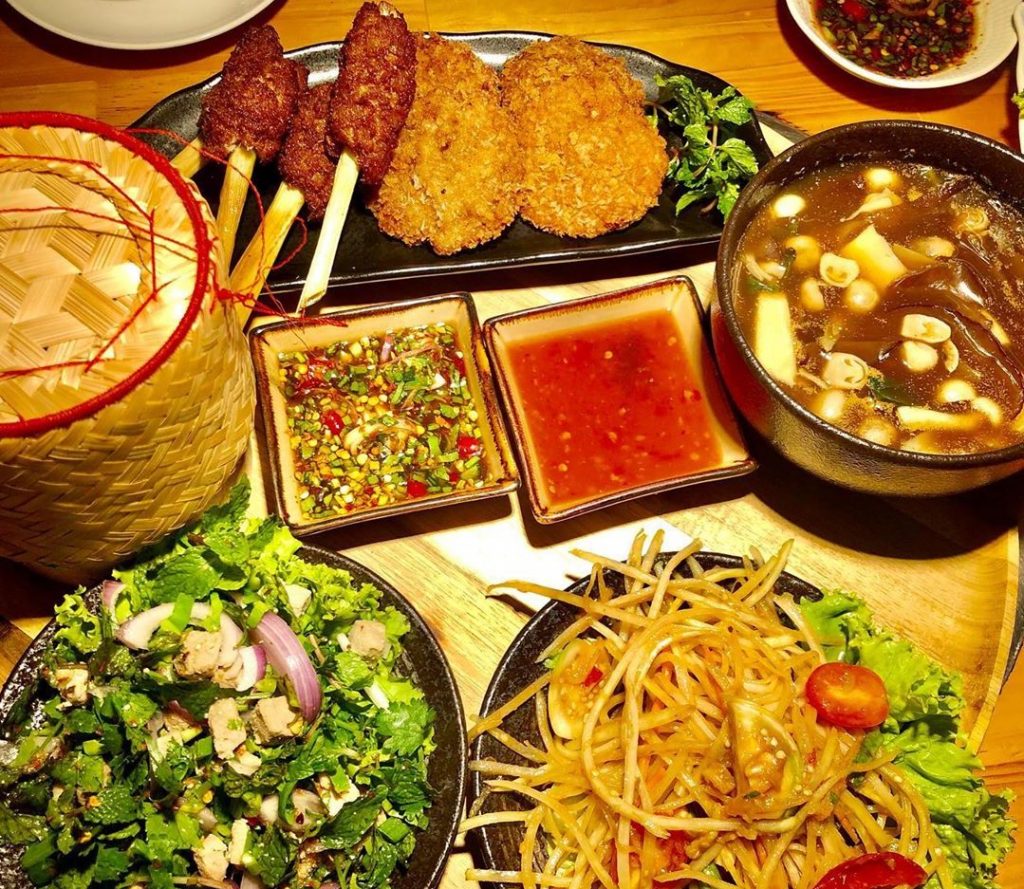
Bun cha Khanh Van: Located at 8 Tran Phu, Ha Dong District.
Chicken rice, mixed vermicelli – Food Center: Located at 85 Tran Phu, Ha Dong District.
Xeo Xeo buffet – Gogi House: Located at 146 Tran Phu, Ha Dong District.
Grilled BBQ ribs – Pepperonis Restaurant: Located at 14 Tran Phu, Ha Dong District.
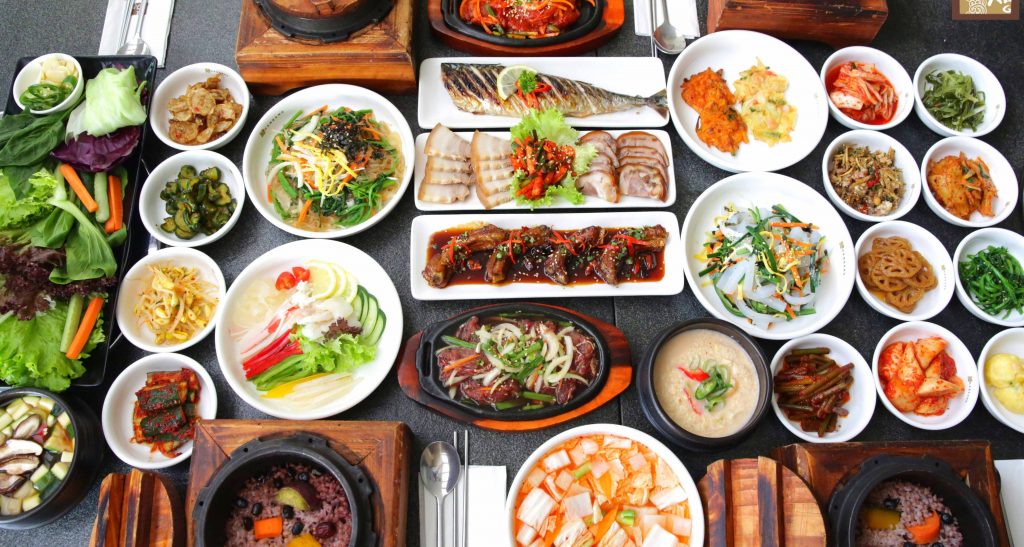
Mixed sticky rice cake – Niêu Sumo: Located at 8 Alley 3 Ao Sen, Ha Dong District.
Singapore frog porridge – Tiktak: Located at 12B Alley 2 Ao Sen, Ha Dong District.
Experience the allure of Ha Dong District Update 07/03/2025
Tourism Cluster in Ha Dong and Surrounding Areas: Focused in Ha Dong District and its vicinity. The main tourism products include: Craft village tourism; Weekend getaway tourism; Cultural tourism; Entertainment and recreational tourism.
Ha Dong is home to over 200 historical and cultural relics, including 83 classified relics and 47 traditional festivals. In 2012, it was estimated that Ha Dong District received 52,300 visitors, including 11,750 international tourists.

